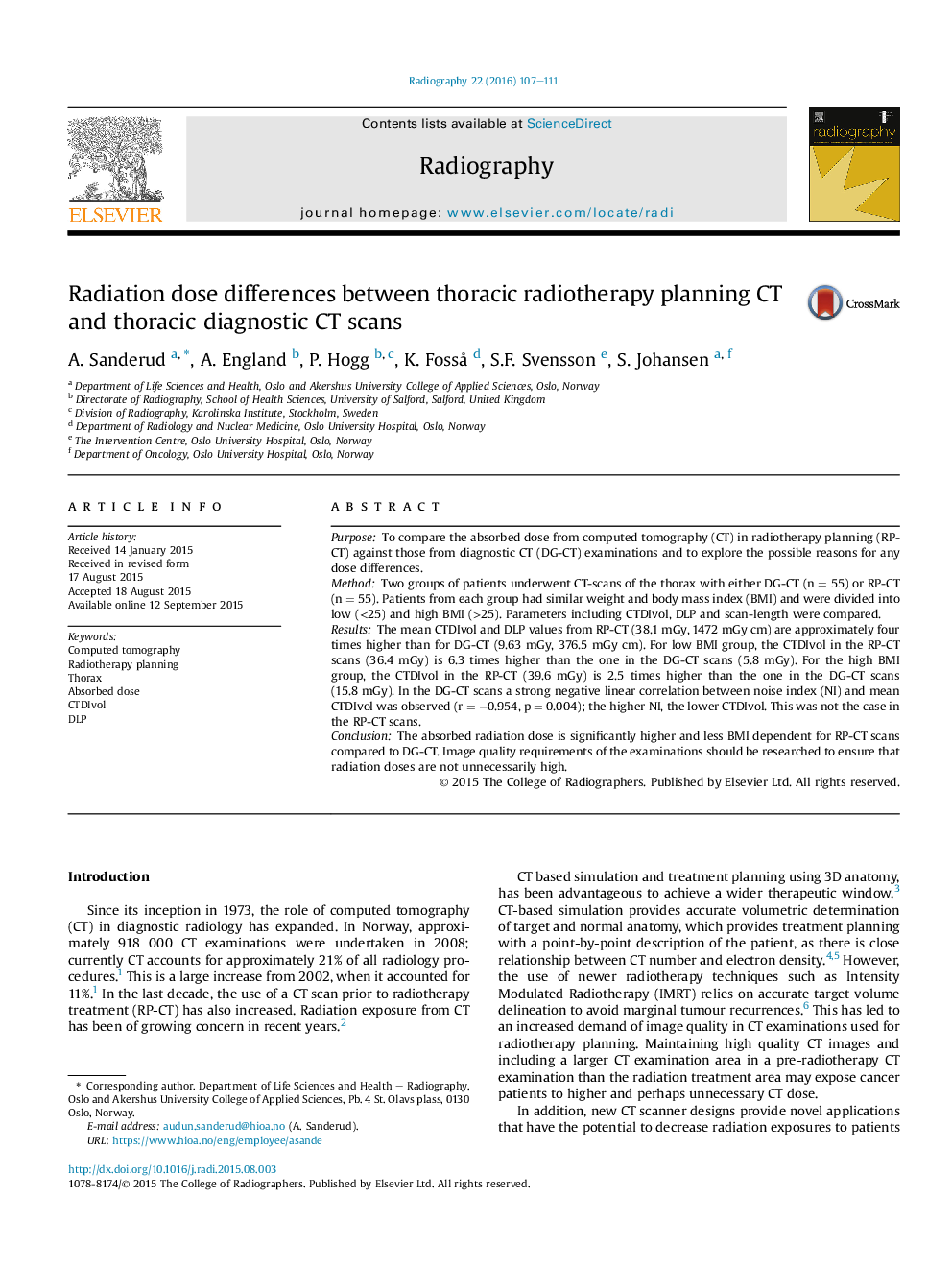| Article ID | Journal | Published Year | Pages | File Type |
|---|---|---|---|---|
| 2734674 | Radiography | 2016 | 5 Pages |
•The radiation dose differences in diagnostic vs. radiotherapy planning thorax CT.•The average effective dose given to radiotherapy planning patients are 30.0 mSv.•The average effective dose given to diagnostic patients are 7.7 mSv.•The CTDIvol is less BMI dependent for radiotherapy planning thorax CT scans compared to diagnostic scans.
PurposeTo compare the absorbed dose from computed tomography (CT) in radiotherapy planning (RP-CT) against those from diagnostic CT (DG-CT) examinations and to explore the possible reasons for any dose differences.MethodTwo groups of patients underwent CT-scans of the thorax with either DG-CT (n = 55) or RP-CT (n = 55). Patients from each group had similar weight and body mass index (BMI) and were divided into low (<25) and high BMI (>25). Parameters including CTDIvol, DLP and scan-length were compared.ResultsThe mean CTDIvol and DLP values from RP-CT (38.1 mGy, 1472 mGy cm) are approximately four times higher than for DG-CT (9.63 mGy, 376.5 mGy cm). For low BMI group, the CTDIvol in the RP-CT scans (36.4 mGy) is 6.3 times higher than the one in the DG-CT scans (5.8 mGy). For the high BMI group, the CTDIvol in the RP-CT (39.6 mGy) is 2.5 times higher than the one in the DG-CT scans (15.8 mGy). In the DG-CT scans a strong negative linear correlation between noise index (NI) and mean CTDIvol was observed (r = −0.954, p = 0.004); the higher NI, the lower CTDIvol. This was not the case in the RP-CT scans.ConclusionThe absorbed radiation dose is significantly higher and less BMI dependent for RP-CT scans compared to DG-CT. Image quality requirements of the examinations should be researched to ensure that radiation doses are not unnecessarily high.
